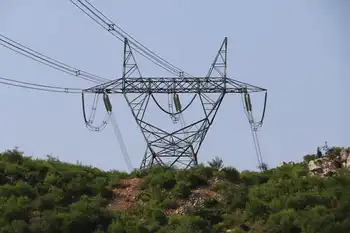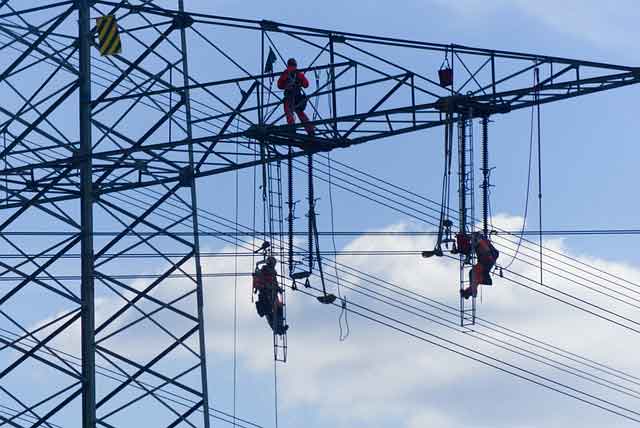Ontario has extra energy this summer
By Toronto Star
NFPA 70e Training
Our customized live online or in‑person group training can be delivered to your staff at your location.

- Live Online
- 6 hours Instructor-led
- Group Training Available
But with July now behind us, it has been eerily quiet on the power front. No pleas for conservation. No warnings of emergency voltage reductions. No heat waves pushing the transmission system to its physical limits.
It's a stark contrast to this time five years ago, when Ontario was plunged into darkness during the largest blackout in North American history. Though Ontario's grid was more a victim than a source of the Aug. 14 event, it left the partly false impression that "keeping the lights on" in the province is a continuous, monumental challenge.
This summer, that couldn't be further from the truth – knock on wood, industry officials say.
"Electricity is a non-story right now," said Mark Wilson, who as manager of the control room at the Independent Electricity System Operator has a bird's-eye view of Ontario's grid.
There are perfect storms, but the province has been enjoying what might be called a perfect calm – ample supply, falling demand and a wet, comparatively cool July that have kept air conditioners at bay and hydroelectric facilities charged up with water.
"Are we in better shape than last year? Absolutely," Wilson said.
More wind power on the grid, Toronto's new gas-fired Portlands Energy Centre, higher capacity from hydroelectric stations and a slightly improved performance from the province's nuclear power stations have all combined to gird electricity supply this summer.
Last summer, three nuclear reactors were out most of the summer compared with only one this season – Unit 7 at Pickering B. Three other reactors at the Bruce, Darlington and Pickering generating stations have had unplanned outages this year, but for shorter periods.
More important has been the drop in electricity use.
"We haven't had a lot of heavy demand," said Keith Stewart, who tracks Ontario's electricity sector for environmental watchdog WWF-Canada.
Record high consumption in Ontario was registered two years ago, on Aug. 1, 2006, when the province consumed 27,005 megawatts. Nine of the 20 highest-consumption days on record happened in 2005, while 2006 and 2007 each claimed four.
This year, no day has come close to making the list. Demand has exceeded 24,000 megawatts for only four hours so far this summer, compared with 32 hours last June and July. The result, officials say, is less coal-fired generation and less need for electricity imports that typically carry us through periods of high demand.
Closer to home, Toronto Hydro spokesperson Blair Peberdy said the city's peak consumption in July was 4,445 megawatts, about 245 megawatts or 5.5 per cent lower than last year's peak.
Rain helped make the difference. July was marked by record rainfall in Toronto and parts of southwestern Ontario, keeping hydroelectric reservoirs filled and temperatures rarely above 30 degrees. More important, overnight temperatures have been lower, preventing a gradual build-up of in-building heat that usually has air conditioners working overtime.
Peberdy said electricity use in Toronto would even be lower if it weren't for an added 3,000 household connections, mostly from new condo developments, and the "heat island" effect that makes the city somewhat warmer and stickier than the rest of the province.
Conservation and a slowing Ontario economy are also reducing electricity demand, though the extent is difficult to measure, Wilson said. In fact, demand-response programs created by the province to better manage electricity use during peak times haven't been called into action – they simply haven't been needed.
The system operator's 18-month forecast, released on June 23, said a 1.2 per cent weather-corrected fall in energy demand during the first five months of this year can be attributed to conservation and an economic slowdown in the province.
Power demand from "directly connected industry" fell by 3.9 per cent compared with last year, a sign of tough times in the province's manufacturing sector.
WWF's Stewart said falling annual electricity demand has clearly become a trend in the province. He called into question the government's 20-year power system plan, currently before the Ontario Energy Board, that anticipates a 1.2 per cent increase in power consumption every year until 2027.
That forecast, added Stewart, is being used to justify the development of new power generation, including nuclear and natural gas-fired plants, which in the end might not be needed.
"They simply have growth predictions that aren't realistic and aren't going to come true," said Stewart, pointing out that the former Ontario Hydro also wildly missed the mark back in the 1980s when it was trying to justify a mass build-out of nuclear plants.
That demand failed to materialize and the plan was scrapped. But predicting peak consumption, compared with long-term trends, is a dramatically different game. Wilson cautioned that demand patterns could turn on a dime this summer if we get a string of hot, sticky days without relief from rain.
Add to that unexpected problems with transmission lines or generation and the seasonal crunch we've experienced in the past could return.
"It can turn in a heartbeat," Wilson said.















